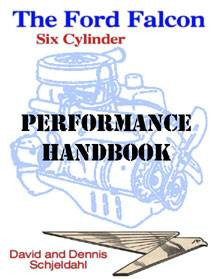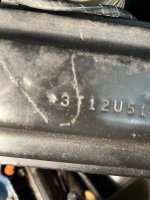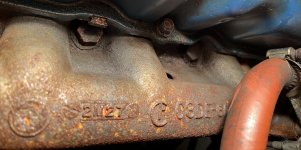Hi My63Comet, here is some Tune Spec's for you.
These are the factory stock tune up specs for most of the small six's with the stock Load O Matic (LOM) Distributor's and matching Carburetor's with a Spark Control Valve (SCV). These were used in the Falcon's Comet's, Fairlane's, Mustang's, & plus a few other Mercury Models from 1963 to 1964 with a 144 Six, 1963 to 1967 with a 170 Six, & 1963 1/2 to 1967 with the 200 Six with either a Auto or a Manual Trans. (Note these are up to a 1967 for the 50 state Emissions and for the California Emissions too but only up to the end of 1965 Model Year).
Also Note that those with the very early Six's in the 1960 to 1962 Models with a 144 Six & the 1961 to 1962 170 Six have the same Tune Up Spec's except that they will have a different Base Timing plus they also had Solid Valve Lifter Camshafts as well as the 144 & 170 Small Six's used up to 1966 that were in the Ford Ranchero's, Sedan Delivery's, & the Econoline's (See the below note for those differences).
They are in the numbered order that they should be performed to get to the quickest baseline Tune Up for your small six engine.
1. First the Spark Plugs are gaped to .034.
2. Points are then set to 38 degrees Dwell this will give you the best performance and economy. In a pinch you can set the point gap to .025 and it will run good but it's not really the ideal setting.
3. Base Distributor Timing is set to 10 degrees BTDC for a Manual trans or 12 degrees BTDC with an Auto trans.
4. Starting with the mixture screw set at 1 1/2 turns out (this is after a rebuild) also have the air cleaner assembly installed too and the engine warmed up good to its operating temperature. Next the Carb mixture screw is tuned to the best lean idle setting. This is done by turning the screw in or out until you reach the highest idle RPM on your Tach / Dwell Meter, then turn the mixture screw inward exactly 1/4 turn.
5. Last set the curb Idle RPM, for a Manual Trans this is 525 to 550 RPM. For an Auto Trans this is set to 485 to 500 RPM in drive with the parking brake set or have someone setting in the car holding down the foot brake. If you happen to have AC it should turned be off too.
Additional Tune Up Specs to be changed in the settings for the 1960 to 1962 144 & 1961 to 1962 170 Six's
3B. For the 1960 to 1962 144's & 170's the Base Distributor Timing is set to 4 degrees BTDC for a Manual Trans or 10 degrees BTDC with an Auto Trans.
3C. For 1960 to 1962 144's and 170's have a Solid Lifter Camshaft. Next Warm up the Engine to operating Temperature and set the Intake and Exhaust Valve Lash to .016 Hot
In the below link is info you can use to help you learn a little bit more about how the early Ford Six's with a LOM (Load O Matic) Distributor and the common Holley 1904 / 1908, Autolite 1100, or the Holley 1940 replacement Carburetor's that had a SCV (Spark Control Valve) these need to be matched to work together with one of the LOM Distributor's. Note that the LOM system doesn't work like any of the other Distributor Vacuum Advance systems used on most other cars and light Pick Up's. This is a good article that will help you in getting to know how this system should work and it might help you to figure out if its causing any problems with your tuning. When everything is right and with an engine that's in good condition a Ford 200 Six will Idle very smooth down to sometimes as low as 425 to 450 RPM in drive (for an Auto Trans car or 400 to 450 RPM for a Manuel Trans car). Also check that the Carb's Choke System is working correctly, see the below link for that info. Good luck

The Ford Load O Matic system
http://www.classicinlines.com/Loadomatic
The Autolite 1100 Carb Settings
Autolite 1100 1101 carburetor adjustments. Illustrated float level, vent valve, accelerating pump and other adjustments.
www.carburetor-blog.com
The Holley / Autolite 1940 Carb Manual
http://www.carburetor-parts.com/assets/ ... manual.pdf
In above manual you will find all the basic settings for float level, choke set up, and testing the fuel pump discharge. If you find that the fuel pump discharge test doesn't work as it should, you may have to stake the ball lightly into the carb base with a small hammer and punch. After doing that you will need to replace that ball with another new ball to replace the one you hammered on. Good luck


Edited!
“If you think you can, or you think you can’t—you are correct!” Henry Ford
Current project is a 1988 John Deere 420 Garden Tractor. I am looking for some small parts and some attachments, if you have or know of JD 420 parts I would welcome the help!
















